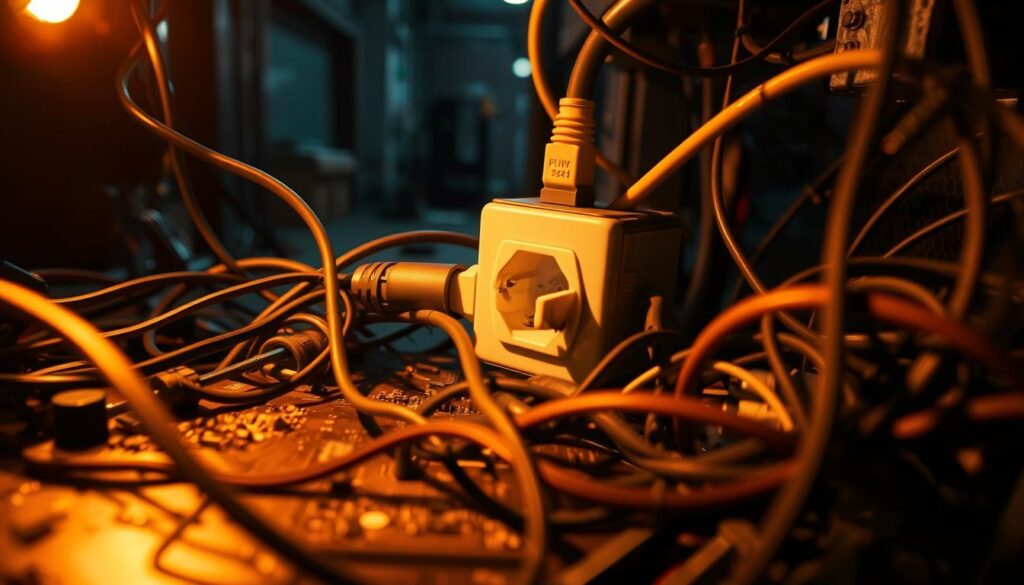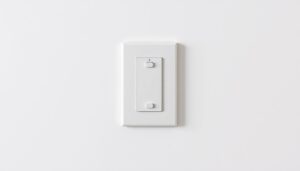Are you tired of dealing with frustrating connection problems on your device? Whether it’s an electrical outlet that requires multiple attempts to establish power or audio equipment with unreliable signal transmission, these issues can be a significant nuisance.
Intermittent socket connection issues can manifest in various ways, affecting different devices and systems. You may experience power interruptions in home appliances and electronics or unreliable sound output from audio equipment.
Understanding the root cause of these problems is crucial to resolving them effectively. In this article, we will explore the various types of connection issues and provide practical solutions to diagnose and fix them.
Key Takeaways
- Identify and resolve various types of socket connection problems affecting devices and systems.
- Diagnose electrical connection issues causing power interruptions in home appliances and electronics.
- Understand how audio equipment socket problems lead to unreliable sound output.
- Explore network and software connection issues disrupting communication between devices.
- Implement preventative measures to avoid future connection failures.
Understanding Intermittent Socket Connection Problems
Understanding the complexities of intermittent socket connection problems is crucial for resolving issues on your device. Intermittent socket connection issues can arise from various sources, including physical, audio, and network sockets.
Common Symptoms of Socket Connection Issues
Identifying the symptoms of socket connection issues is vital for effective troubleshooting. Common symptoms include intermittent disconnections, poor signal quality, and failure to establish a connection. Recognising these symptoms can help you pinpoint the source of the problem.
- Physical symptoms: loose connections, damaged cables, or worn-out sockets.
- Audio symptoms: distorted sound, loss of audio, or irregular signal output.
- Network symptoms: dropped connections, slow data transfer, or failure to connect.
Different Types of Socket Connections
Socket connections encompass a broad range of technologies, including physical electrical sockets, audio equipment connections, and network sockets. Each type has its unique characteristics and potential issues.
| Type of Socket Connection | Description | Common Issues |
|---|---|---|
| Physical Electrical Sockets | Deliver power to household appliances and electronic devices. | Loose connections, worn-out sockets, or damaged wiring. |
| Audio Equipment Sockets | Transmit audio signals between devices. | Poor signal quality, distorted sound, or loose connections. |
| Network Sockets | Enable communication between software applications across devices. | Dropped connections, slow data transfer, or protocol mismatches. |
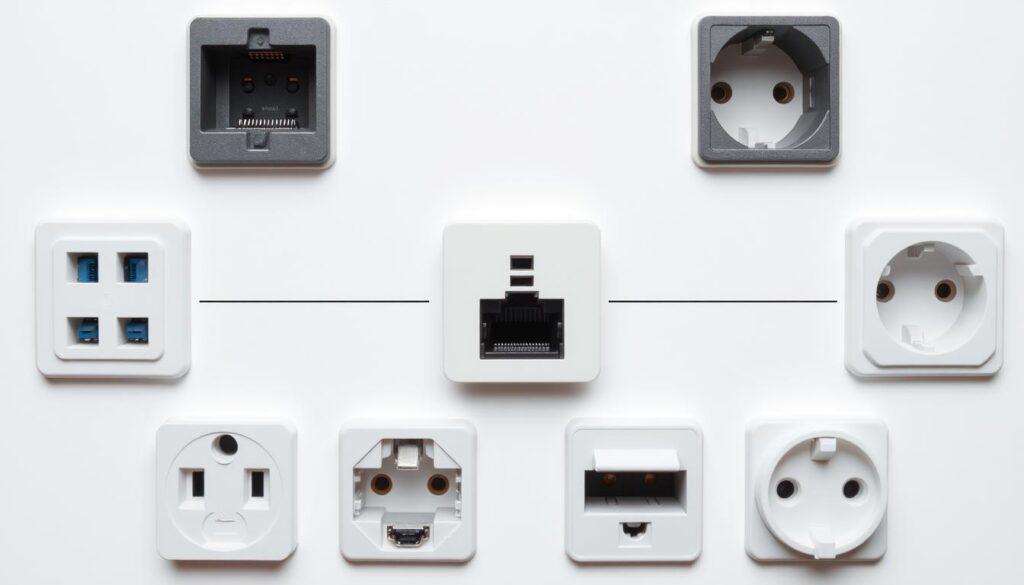
By understanding the different types of socket connections and their associated issues, you can more effectively diagnose and resolve intermittent socket connection problems.
Diagnosing the Root Cause of Socket Issues
Diagnosing socket connection problems involves a combination of technical knowledge and the right diagnostic tools. To effectively resolve intermittent socket connection issues, it’s crucial to understand the underlying causes and apply the appropriate diagnostic techniques.
Physical Socket Connection Problems
Physical socket connection problems often relate to electrical or hardware issues. For electrical sockets, using a multimeter can help test for proper voltage, continuity, and resistance. This simple diagnostic step can identify if the issue lies within the socket itself or elsewhere in the electrical circuit.
Common issues include loose connections, worn-out sockets, or faulty wiring. Ensuring that all connections are secure and that sockets are not damaged can often resolve these issues.
Software and Network Socket Issues
Software and network socket issues, on the other hand, require different diagnostic approaches. Tools such as packet analyzers, port scanners, and command-line utilities like netstat can provide insights into network socket problems. These tools help identify issues such as blocked ports, misconfigured network settings, or malfunctioning network services.
Tools for Diagnosing Socket Problems
A variety of tools are available for diagnosing socket problems, depending on the type of socket. For audio equipment, signal generators and oscilloscopes can test for signal integrity and identify faulty connections. For network issues, specialised software tools can analyse network traffic and detect configuration problems.
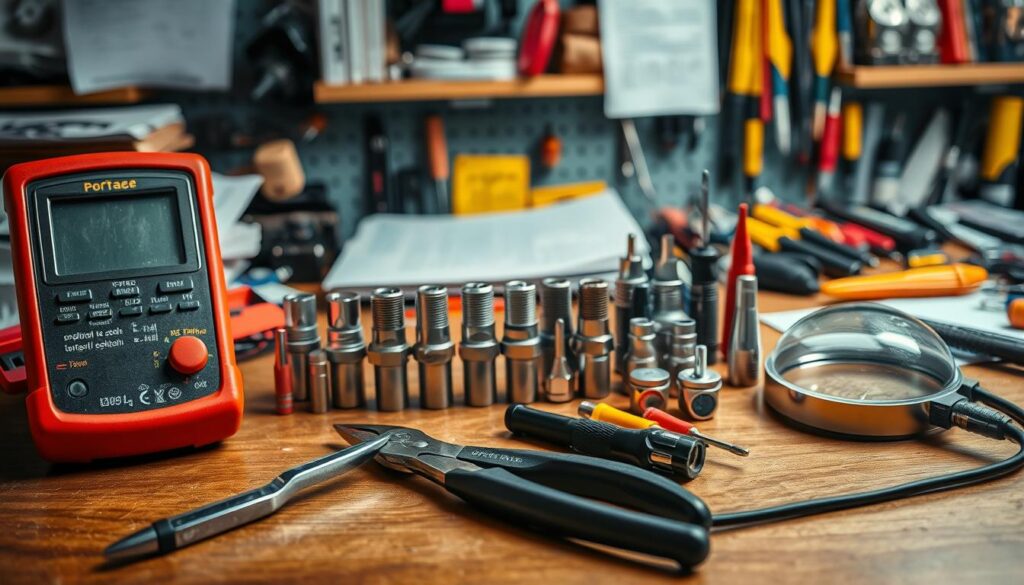
| Issue Type | Diagnostic Tool | Purpose |
|---|---|---|
| Electrical Socket Issues | Multimeter | Test voltage, continuity, and resistance |
| Audio Equipment Issues | Signal Generators and Oscilloscopes | Test signal integrity and identify faulty connections |
| Network Socket Issues | Packet Analyzers, Port Scanners, Netstat | Analyse network traffic, detect configuration issues |
By understanding the appropriate diagnostic tools and techniques for different types of socket connection problems, you can effectively identify and address the root cause of the issue, ensuring a reliable connection.
Step-by-Step Solutions to Fix Intermittent Socket Connection
To resolve intermittent socket connection issues, it’s essential to follow a systematic approach that addresses both physical and software-related problems.
Fixing Physical Electrical Socket Issues
When dealing with loose electrical sockets, first ensure your safety by switching off the power supply at the consumer unit or fuse box. Then, check the socket for any visible signs of damage or wear. Tightening loose connections can often resolve the issue.
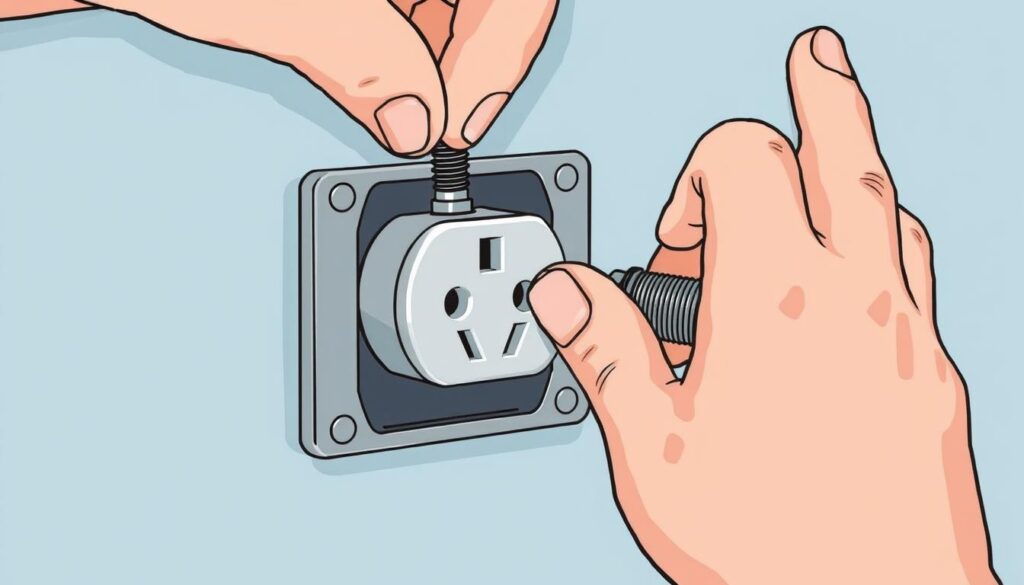
Resolving Audio Equipment Socket Problems
For issues with audio equipment sockets, using a contact cleaner like Deoxit can help restore a reliable connection. Apply the cleaner to the affected socket and let it dry before testing the equipment again.
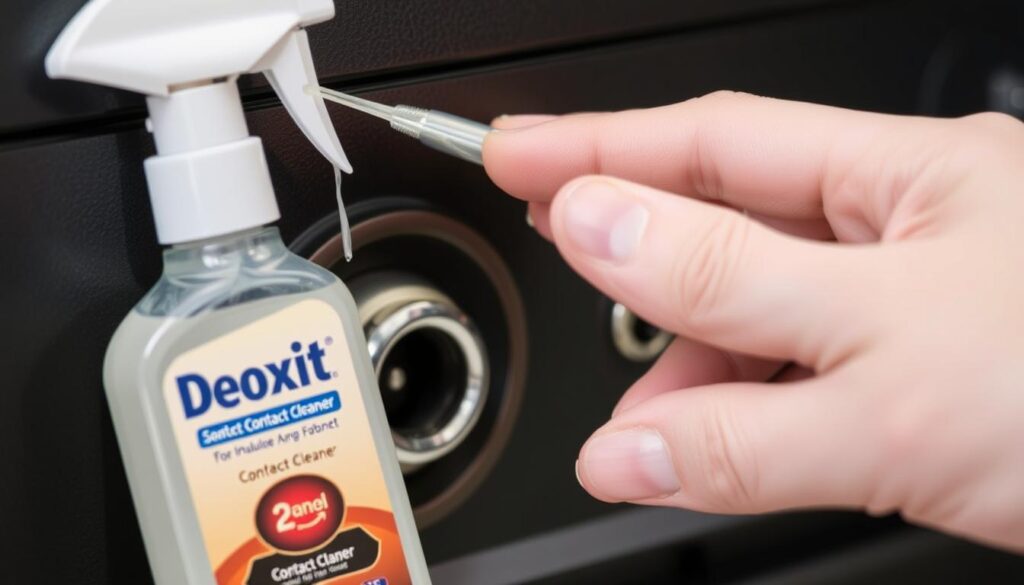
Troubleshooting Network and Software Socket Connections
For network socket issues, start by checking your firewall settings and temporarily disabling it to test connectivity. Update your network drivers and ensure that your software has the necessary permissions. If problems persist, try restarting your system to resolve any connection issues.
Regularly updating your operating system and network drivers can help maintain stable connections.
By methodically troubleshooting and addressing potential causes, you can effectively resolve many common socket connection problems.
Conclusion: Preventing Future Socket Connection Problems
By understanding the root causes of intermittent socket connection problems, you can implement effective preventative measures. Regular maintenance and inspection play a crucial role in identifying potential socket issues before they cause disruptions. Environmental factors such as dust, humidity, and temperature significantly affect the reliability of socket connections over time.
To minimise the frequency and severity of socket connection problems, adopt a multifaceted approach. For electrical sockets, this includes regular inspection and prompt replacement of damaged components. For audio equipment, periodic cleaning and proper storage can prevent connection issues. Network socket reliability can be improved through regular software updates, proper configuration, and monitoring connection quality.
- Regular maintenance can identify potential socket issues before they cause disruptions.
- Proper usage habits significantly extend the functional life of various socket connections.
- Understanding the importance of quality components and proper installation informs better purchasing decisions.
- Documenting socket-related problems and solutions helps identify patterns and prevent recurring problems.
By implementing these strategies, you can enhance the reliability of your device’s socket connections, reducing the likelihood of future connection issues. Balancing cost-effective DIY maintenance with professional servicing for complex socket systems is key to optimal performance.
